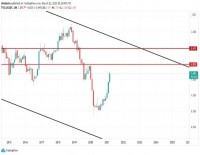|
Patterns in Asset Flows Managed futures asset flows in the past 18 months offer an suggestive picture of investor behavior. We point out some patterns and draw the implications for asset allocation in the near future. Data from several vendors now indicates that the net flow of capital turned positive for managed futures some time in the second quarter of this year. The hedge fund industry as a whole was still losing assets at that time. Net flows (investments minus redemptions) turned positive in managed futures and global macro earlier than in other strategies such as event-driven. Looking back, the changes have been extraordinary. The figure below, based on Lipper Tass net flow data for managed futures, shows a dramatic picture. There are two notable patterns. One, in the second and third quarters of 2008 there were relatively robust inflows. During those months investors may have moved money to commodity trading advisors to take advantage of the commodity boom. There is another, intriguing, explanation. Some investors may have decided to allocate to managed futures starting March of last year as a defense against economic turbulence. By then the downturn in real estate was pronounced and Bear Stearns had collapsed, giving rise to fears about illiquid assets and new risks. It is plausible that some people turned to managed futures because of these concerns. By contrast to managed futures, hedge fund investments in general were anemic in Q2 of 2008 and turned negative in Q3. In other words, money was coming to CTAs at a time when it was leaving hedge funds in mid-to-late 2008. Then came the collapse of Lehman Brothers in September 2008, ushering in the severe crisis where asset prices fell in tandem and sharply. Managed futures and short selling were the only alternative strategies that made gains in that environment. In retrospect, the investors who allocated more to managed futures were of course wise. But leveraged investors needed money while many hedge funds froze redemptions. Since commodity trading advisors were open for withdrawals, people used CTAs as ATMs to get cash. The second notable pattern in the figure is how extreme the outflow was in the last quarter of 2008. It dwarfed past asset flows. The outflow in the first quarter of this year, while not as extreme, was still large. The slowing of redemptions is the big change in recent months. New investments are comparatively of modest size. By all evidence the tide turned in May, making for a positive net flow in the second quarter. This continued in July and August, with a stronger inflow in August. Nevertheless, total assets in managed futures remain below the peak, as in the hedge fund industry at large. Exact amounts vary across databases. Available estimates of current managed futures assets range from a low of $121 billion to a high of around $200 billion. Those estimates may miss some assets outside North America. Global macro followed a similar path. It received relatively large, positive inflows in the second and third quarters of 2008 before losing assets significantly in the fourth quarter. Global macro investing recovered in the second quarter of 2009, though less robustly than managed futures investing. Portfolio Insurance With respect to distinct investor groups, Man Group’s six-month review at the end of September offered evidence. Man saw money come in from individual investors especially in Asia Pacific and the Middle East, but some individuals went on redeeming. “While the private investor investment movement was positive in the second quarter, reflecting improved performance at AHL, it was an estimated $1.3 billion negative for the first half overall,” according to Man Group’s release. Man’s futures trading program AHL has been in the red this year, like many trend followers. Institutional investments were weak. “Institutional sales remained muted through the second quarter, but redemptions declined markedly and are expected to total $1.7 billion for the second quarter compared to $3.6 billion in the first quarter,” said the release. “This slowing of redemptions is set to continue, with quarterly redemptions to be paid on 1 October of $0.7 billion.” What’s on allocators’ minds now? Man Group chief Peter Clarke says they see strong levels of institutional interest and investor sentiment is continuing to improve across the industry. Here is another perspective from a fund of funds. James Edwards, chief investment officer at Eurogestion & Partners, says in a review that they have retained an 8% allocation to what they call “portfolio insurance” even though he does not expect a slide back into recession. The just-in-case portfolio insurance bucket contains short sellers, volatility arbitrage, short-term CTAs and a small position in gold. Mr. Edwards points out that this year’s worst performers are last year’s best performers, such as CTAs. And vice versa—last year’s laggards, such as convertible arbitrage, are this year’s top performers. He expects further mean reversion to take place as liquidity returns to the markets. As economic recovery gains steam, his preferred hedge fund style is equity hedge. If a significant number of investors agree with this way of thinking, there won’t be a stampede to CTAs in the coming months, barring an unexpected downturn. On the other hand, many may now regard managed futures as portfolio insurance. Indeed, as we saw, investors allocated to managed futures after Bear Stearns failed in 2008 and some of that must have been for protection. To the extent a similar approach to asset allocation is in place, CTA inflows should continue to be strong, if not exceptional. |
|
This article was published in Opalesque Futures Intelligence.
|





 RSS
RSS











